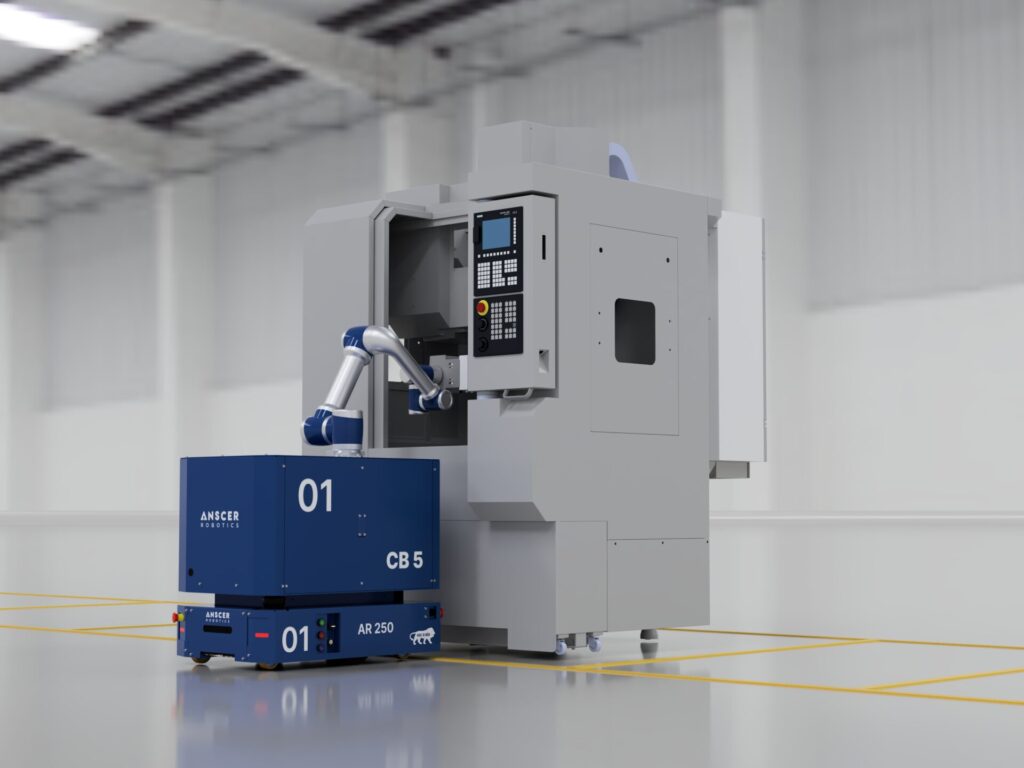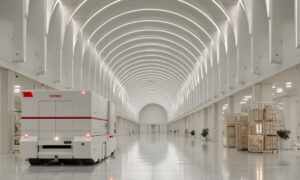Driven by technological advancements, shifting geopolitical dynamics, and evolving consumer demands, the supply chain and manufacturing landscape is rapidly changing, forcing industries to rethink traditional operations and embrace more agile, automated solutions. Hybrid AMRs are driving a transformation that executives and industry professionals can no longer ignore. The demand for warehouse robotics has impressive growth. Once limited to e-commerce warehouses, robotics is now expanding into a critically under-automated sector: manufacturing. Consequently, hybrid AMRs are not just enhancing productivity; they are reshaping operational efficiency and resilience.
Manufacturing’s Untapped Potential for Robotics
For years, the robotics conversation centered around mega-warehouses for online retail giants, where speed and order fulfillment drove innovation. Meanwhile, manufacturing floors—the foundation of global supply chains—relied heavily on manual processes. As a result, robotics remained underutilized, creating a significant opportunity for forward-thinking companies like Anscer Robotics. These companies are building hybrid AMRs specifically designed for the rigorous demands of manufacturing environments.
What Sets Hybrid AMRs Apart
Unlike traditional warehouse robots, hybrid AMRs deliver industrial-grade durability and flexibility. They combine the intelligence of autonomous mobile robots with the load capacity of automated guided vehicles (AGVs), making them ideal for dynamic, heavy-duty environments. Furthermore, Anscer Robotics has developed solutions tailored to meet the needs of manufacturers who require agility, precision, and reliability without the exorbitant costs typically linked to automation.
Mark Messina, CEO of Americas at Anscer Robotics and a veteran of Amazon Robotics and Kiva Systems, shares, “Manufacturing has been largely neglected when it comes to mobile robotics. Most providers focus on e-commerce, but factory floors remain underserved. Our goal is to fill that gap with industrial-grade, easy-to-integrate hybrid AMRs that thrive in tough conditions.”
Meeting the Demands of Modern Supply Chains
Manufacturing and supply chain operations today demands speed, resilience, and adaptability. Hybrid AMRs meet these demands head-on. Unlike Automated Guided Vehicles (AGVs), which rely on fixed infrastructure and predefined pathways, hybrid AMRs use advanced navigation and mapping technologies, making them adaptable in real time and reducing the need for costly facility reconfigurations. This enables seamless scalability.
An Easier Path to Automating
For manufacturing executives concerned about cost and complexity, hybrid AMRs offer an enticing solution. Traditional automation requires significant upfront investment and complex integrations while hybrid AMRs are designed for rapid deployment. Selecting a provider with a solid software infrastructure is key to make these hybrid AMRs user-friendly, cost-effective, and easy to operate.
Reshoring: Today’s Strategic Priority
As companies face mounting pressures to reshore manufacturing due to geopolitical uncertainties and supply chain vulnerabilities, finding scalable, cost-effective automation solutions like hybrid AMRs has become essential to driving these reshoring efforts successfully. Hybrid AMRs provide manufacturers with an accessible path to automation. The United States, in particular, is seeing renewed investment in domestic manufacturing. Therefore, now is the ideal time to implement scalable, reliable robotic solutions that future-proof operations.
The Power of Robot-as-a-Service (RaaS)
Another game-changer is the Robot-as-a-Service (RaaS) model. Anscer’s approach to RaaS directly addresses executive concerns about financial risk and operational flexibility. Instead of requiring large upfront investments, this model enables businesses to pay only when the robots are actively utilized. By shifting from capital expenditure to operational expenditure, manufacturers gain a scalable, low-risk path to automation. This usage-based structure removes the burden of long-term financial commitments, allowing companies to align costs with productivity and adjust quickly to changing demands.
Messina continues to say, “The RaaS model is what everybody loves because it takes a lot of the risk out of automation because you’re not tethered to the service forever. If you’re not using the hybrid AMRs, you’re not paying for them.”
Why Hybrid AMRs Are a Strategic Imperative
For manufacturing leaders and supply chain strategists, the takeaway is clear: hybrid AMRs are not just a technological upgrade—they are a strategic necessity. Automation is no longer optional; it is the future of efficient and resilient operations. Robots, particularly hybrid AMRs, have become indispensable tools in driving real efficiencies across warehouses and manufacturing environments. Companies that integrate these versatile, resilient solutions now will position themselves to thrive in the next wave of global supply chain evolution.
Ultimately, the new era of logistics and manufacturing belongs to those ready to embrace hybrid AMRs as a cornerstone of operational excellence.
































